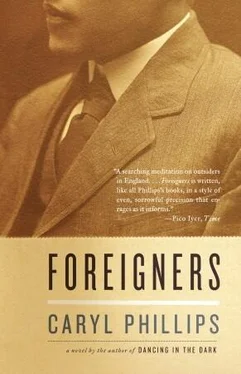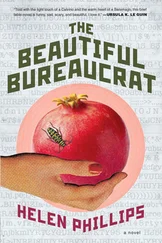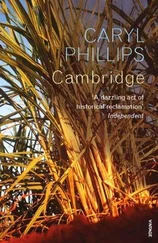The history of Leeds begins with the river; without the river Leeds would never have come into being. Thirty miles to the north-west of the present-day city, a thin trickle of water dribbles through the massive limestone cliff of Malham Cove, which is part of the brooding Pennine range that forms the knobbly spine running up the middle of England. The thin trickle of water falls and becomes a stream, and soon after the stream bursts and becomes a river named Aire. The river flows quickly, to the south and to the east through the Aire Valley and in the direction of the much mightier River Humber. When the Romans laid out a road from York (Eboracum) in the east to Manchester (Mancunium) in the west the River Aire was an obstacle that had to be crossed. Eventually the Romans decided that the road should cross the River Aire at a place near the present-day Leeds Bridge.
For 400 years the Romans occupied Britain, subduing sporadic uprisings, civilising the local people, and educating them in the ways of bathing, heating, and construction. However, before the coming of the Romans, tribal Celtic people had cleared the lush woodland of the Aire Valley. Having done so they grew oats and barley, and raised sheep, pigs, and cattle on both banks of the River Aire. They lived in circular stone huts, and ground their corn and flour in handmade pottery. Although their 'civilisation' progressed from stone to bronze, and then from bronze to iron, this evolution could not disguise their essential warlike tribal nature. They built ramparts and defences against each other, and they fought with habitual ferocity, slaughtering families and livestock. However, when the Romans arrived, under the command of Julius Caesar, and began their regimented, disciplined march through the foggy island, the tribal people soon capitulated. The Aire Valley, and the people contained therein, submitted to the iron-fisted authority of Roman rule, but the invaders knew that in order to ensure no further nonsense from these Britons it would be necessary to build roads along which Roman troops could quickly move through this uncultured land. And so Leeds was born, for one such road crossed the River Aire.
Roman Leeds (Loidis) is memorialised only by occasional discoveries of shards of pottery, or old coins. Roman Britain soon became Christian Britain, and although the Romans continued to rule they were forever battling marauding Pagan tribes who were determined to overthrow them. In AD 410 the Eternal City of Rome was herself sacked, and Anglo-Saxon tribes seized this opportunity and invaded the island of Britain. Eventually, the exhausted Romans let it be known that it was the duty of the Britons to protect their own land, including the river settlement of Loidis, and thereafter the Dark Ages descended upon Britain as the Saxons and the Jutes and the Angles swarmed across the chaotic land. Pagan tribal kings killed Christian tribal kings who in turn killed pagan tribal kings. Leeds was a Christian region which possessed a ninth-century church of some size and importance, and when the Vikings eventually invaded Anglican Britain, and set up their capital at York, they were aware of the important township to the west over which they immediately proceeded to exercise their Danish law. Leeds was growing in size, and although much of the land beyond the manorial settlement remained heavily wooded, there were some clearings that included, north of the river, such villages as Headingley, Seacroft, and Alwoodley, and south of the river the villages of Armley, Bramley, and Beeston.
The settlement of Leeds suffered the misery of being visited by the plagues that swept Britain in 987, in 1001, and again in 1046, and the population of the township was decimated. In 1066, the Normans, under the command of Duke William of Normandy, crossed the Channel, killed the new English king and imposed their Gallic rule, but the north of England objected and rebelled. Three years later, in 1069, a frustrated William led his army on a mission to sack, destroy, and forever subdue the northern population, a campaign of action which became known as the Harrying of the North. Almost half of Yorkshire's 1,900 settlements were totally destroyed, and a significant number were cripplingly damaged, but Leeds was spared the might of the Norman hammer. The evidence of her good fortune is made clear in the Doomsday Book of 1086 which recounts that, during this period, the value of the township of Leeds, with a population of approximately 200, actually increased.
The township's simple structures were dominated by the manor house, the parish church, and the mill, and agriculture was the means by which most people made their living. The tilling of the soil, and the breeding and slaughter of beasts, took place in accordance with the changing seasons. Norman Leeds, like other settlements in the kingdom, developed a cyclical pattern of life. Nestled in the Aire Valley, and located at an important river crossing, under Norman rule Leeds quickly began to develop and dominate the surrounding villages both economically and in terms of the grandeur of her vision. Throughout the twelfth and thirteenth centuries, as Norman England gradually gave way to medieval England, the township by the river crossing continued to grow. It adhered to a model of feudalism in which land was held by the king, who stood at the apex of the system, with barons and noblemen, down to the peasants, ranged beneath him in an orderly fashion. All offered the king some form of service in exchange for their right to occupy their particular station in society.
Medieval life centred around the manor house, with its communal oven, and there was a tightly organised taxation structure so that all monies flowed back towards the lord of the manor, who owed his allegiance directly to the king. However, the manorial township of Leeds, whose manor house was located near Kirkgate, was not generating enough money to satisfy the lord of the manor so an extension of the town, centring on Briggate, was established. In this new town the freeholder of the land had no political rights, but they were permitted to build workshops and establish crafts and industries which, it was hoped, would eventually generate more income for the lord. By the fourteenth century the new town and the old manorial township had fused as one, and the influence of the old system was declining as the actual manor house itself began to fall into disrepair. Profits from usage of the land began to fall sharply, and it was becoming clear to residents and visitors alike that Leeds was an increasingly dilapidated town. This situation was made worse by the arrival, in July 1348, of the bubonic plague. However, compared to the damage visited upon other English towns, Leeds escaped quite lightly.
After the plague, Leeds sought to arrest its decline and develop an industrial base. Blacksmiths were encouraged, coal mines were sunk, mills for the grinding of corn were constructed, but most notably, the woollen industry began now to dominate the economy. Having an advantageous position on a river, and a major road connection, the burgeoning woollen textile industry was able to rapidly develop. The wool was delivered by local farmers and then sorted into proper grades, washed, and the matted fibres straightened. The straightened wool fibres were then spun into thread, and the threads woven into one continuous cloth. The cloth was wetted so that it would shrink, and then trampled upon so that the fibres would mat together. Thereafter, the wet cloth was placed on frames and stretched, then dyed and finished, which often meant raising the pile by brushing it. Leeds cloth was known as 'northern dozens', and cut to about four metres. It was taken to the Monday market in Leeds where this quality product soon developed a national reputation. Leeds men were known to be well-dressed individuals in good wool cloth, and the townspeople, including those who in the future would dress in long black coats and stand at the bottom of Button Hill, were smartly attired. The sheer quality of the cloth on the back of the town's population would ensure that this small northern town began now to swell in size, wealth, and renown.
Читать дальше











![Unknown - [Carly Phillips] The Bachelor (The Chandler Brothe(Bookos.org) (1)](/books/174132/unknown-carly-phillips-the-bachelor-the-chandle-thumb.webp)
